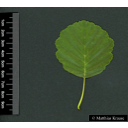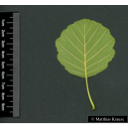Useful information about the taxon (species, subspecies, variety...)
Alnus hirsuta (Spach) Rupr. 1857
Betulaceae
(APG IV)Manchurian alder
Taxon concept: The Plant List (2010)
Distribution: Japan, Korea, Sachalin, Kamchatka, East Siberia
Alnus hirsuta (Spach) Rupr. - Accepted: Alnus hirsuta (Spach) Rupr. bei Zander 2008; Familie: Betulaceae (Zander 2008)Alnus hirsuta (Spach) Rupr. - Accepted: Alnus hirsuta (Spach) Rupr. bei The Plant List (2010); Familie: Betulaceae (APG III)Alnus hirsuta (Spach) Rupr. - Accepted: Alnus hirsuta (Spach) Rupr. bei The Plant List (2014), version 1.1; Familie: Betulaceae (APG III)Alnus hirsuta (Spach) Rupr. - Accepted: Alnus hirsuta (Spach) Rupr. bei The Plant List (2014), version 1.1; Familie: Betulaceae (APG IV)
- Flowers
- monoecious
- Flower ecology
- wind-pollinated (anemophilous)
- Life form
- tree
- Leaves
- suborbicular to broadly ovate; petiole densely pubescent, 1.5-5.5 cm long
- Foliage persistence
- deciduous
- Fruits
- nut fruit with papery wings (samara)
- Fruit ecology
- wind-dispersed (anemochorous)
- Natural occurrence (habitat)
- mountain slopes, stream banks, river valleys
- Vegetation typ and synecology (plant community)
- temperate forests
- Usage
- wood is used for the production of agricultural tools and furniture
- Bark
- smooth, grey-brown bark
- Altidudinal lower limit (sea level in m)
- 700
- Altitudinal higher limit (sea level in m)
- 1,500
Erhardt, W., Götz, E., Bödeker, N. & Seybold, S. (2008): Der große Zander. Enzyklopädie der Pflanzennamen. Band 2. Arten und Sorten. Eugen Ulmer KG, Stuttgart (Hohenheim), 18. Aufl., 2103 S.; Fet, V. & Atamurodov, K. (2012): Biogeography and Ecology of Turkmenistan. Band 72 von Monographiae Biologicae. Springer Science & Business Media, Luxembourg: 653 S. 978-9-401-11116-4.; Plants for a Future (1996-2012): PFAF. See: https://pfaf.org/;
Diese Webseite verwendet Google Maps, um Karten und Standorte von Pflanzen in den Hohenheimer Gärten anzuzeigen. Dadurch werden unter Umständen Daten an Google weitergeleitet, was mit einer Verarbeitung Ihrer personenbezogenen Daten verbunden sein kann. Die Datenschutzerklärung von Google finden Sie hier: Datenschutzerklärung von Google
| Sex | Standort | Accession number | Planting year | Donation | IPEN | Lat. | Long. |
|---|---|---|---|---|---|---|---|
| Parzelle Z | LG-Z-036-13865 | 1999 | + | XX-0-HOH-LG-Z-036-13865 | 48,7057530422 | 9,2128144173 |


